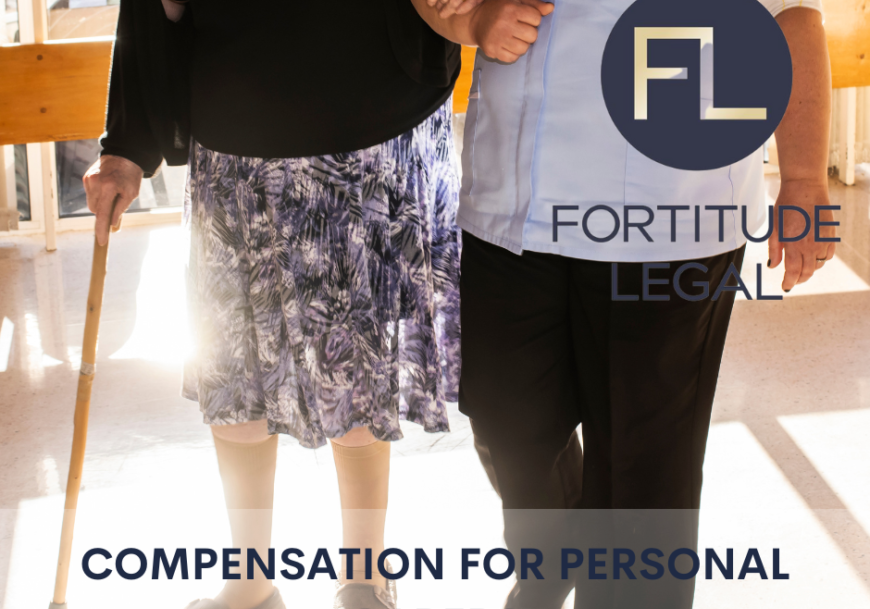Injured In A Transport Accident – How Are My Losses Calculated?

INJURED IN A TRANSPORT ACCIDENT – HOW ARE MY LOSSES CALCULATED?
TAC Loss of Earning Capacity Benefits Rate
If you have been injured in a transport accident, you may be entitled to receive loss of earning capacity benefits. The calculation of the rate of loss of earning capacity benefits is treated differently to loss of earnings benefits by the TAC as the TAC does not deduct tax from the payment.
Benefit Duration
Typically, loss of earning capacity benefits commence 18 months after a transport accident (after the loss of earnings benefit period has expired). Persons injured in a transport accident are usually able to claim loss of earning capacity benefits for a period of 18 months following the transport accident, subject to providing certificates demonstrating that their transport accident injuries are causing incapacity for work.
In some circumstances loss of earning capacity benefits are able to be paid up until the date of the normal retirement age set for the injured person’s occupation. If there is not a normal retirement age set for the injured person’s occupation, the benefit is payable until the person can apply for the aged pension.
Calculation Methodology – “Earner”
The TAC’s typical method of calculating an entitlement to loss of earning capacity benefits for an earner is to use the rate of pre-accident weekly earnings from the loss of earnings assessment to calculate the entitlement. Click link here for an explanation of the calculation of pre-accident weekly earnings in loss of earnings benefits determinations.
This methodology may be appropriate in most situations. However, there are a number of circumstances where it may not be appropriate and the injured person could make a claim based on a higher rate. For example:
- A person is working part-time at the time of the accident and would have moved to full time employment by the time of the loss of earning capacity period.
- A person was not working at the time of the accident (but had worked in the 12 months prior to the accident) and would have returned to employment by the date of the loss of earning capacity period.
- A person was working on a full-time basis in lower paid employment and would have transitioned into higher paid employment by the time of the loss of earning capacity period (for example, had demonstrated a pathway to higher paid employment in an alternative industry whether through the completion of studies or the achievement of practical training).
- A person is not able to demonstrate their full capacity due to carer responsibilities and is limited in the number of hours or type of work that they can perform (i.e. caring for an elderly family member or child) and that the injured person would have been relieved of these responsibilities at the time of becoming eligible for loss of earning capacity benefits.
- In situations where an amount cannot be determined with the usual methodology (such as where the injured person was for example, a student), then the amount can be deemed to be 100% of average Victorian weekly earnings (of which the rate of loss of earning capacity benefits will be 80%).
The law surrounding loss of earning capacity benefits is restrictive in that it does not allow for an injured person to rely upon common law concepts of future capacity. For example, an intelligent high school student who had not commenced a course in IT would not be able to claim loss of earning capacity benefits based on a computer programmer’s salary.
Calculation Methodology – “Non Earner”
There may be situations where a person is a “non-earner” but they nonetheless have suffered a loss of earning capacity. These cases are difficult. Fortitude Legal succeeded in litigation in a case relying on this provision (see Mawson v TAC [2021] VCAT 913). This case is believed to be the only case squarely addressing this provision. There, the injured person was 18 at the time of their transport accident. The injured person was unemployed and in receipt of Centrelink benefits. The injured person had endured a very difficult and impoverished upbringing, extremely limited education and had performed brief and sporadic work in the past. She was then very seriously injured in the transport accident. Essentially, given the injured person’s difficult background, the TAC attempted to argue that the injured person was effectively a ‘write-off’ in relation to having any earning capacity at the time of the transport accident. We found this to be an unfair and incorrect characterisation, effectively meaning that where you live, and the opportunities you have had in your earlier years dictate your entitlement. The President of the Tribunal found in the injured person’s favour, noting the overly pessimistic view of the injured person the TAC attempted to portray. Cases involving young people with limited work histories and difficult backgrounds are easy to be treated as ‘too hard’ – however, proper analysis of the law and gathering the required evidence, along with an open mind, can lead to successful access to substantial entitlements here.
Pre-Accident Earning Capacity – TAC Requirement to pay Loss of Earning Capacity Benefits at 80% of Pre-Accident Earning Capacity
The TAC will calculate a figure that they interpret to be the average gross weekly earnings by utilizing the above methodologies. After calculating the average gross weekly earnings, the TAC is required to deduct the rate of tax payable on the gross amount (as at the time of the accident) and then apply indexation in order to calculate the pre-accident earning capacity.
Typically the TAC is required to pay the injured person at 80% of their pre-accident earning capacity. However, if a person is a low income earner, there is a formula that allows an injured person to be paid up to 100% of their pre-accident earning capacity.
The 80% formula sets a statutory minimum figure, which is currently set at $692 and allows an additional sum of $196 for the first dependent and an additional $67 for every additional dependent.
The formula also has a statutory maximum figure of $1,300.
The statutory minimum and maximum figures are indexed each financial year.
Please note the following worked examples to assist in understanding the ways that the formulas are utilised:
- John’s pre-accident earning capacity is $1,000 per week and he has a dependent partner and dependent child. 80% of $1,000 is $800. However, given John’s income and his dependents he would receive loss of earnings benefits in the amount of $955 (Dependent formula of $692 + $196 + $67 = $955). You will note that John is not able to receive loss of earning capacity benefits at a sum greater than his pre-accident earning capacity.
- Andrew’s pre-accident earning capacity is $5,000 per week. 80% of $5,000 is $4,000. However, given that Andrew’s pre-accident earning capacity exceeds the statutory maximum his loss of earning capacity benefits are reduced to the statutory maximum of $1,300.
- Angus’ pre accident earning capacity is $900 per week and he does not have any dependents. 80% of $900 is $720. The statutory minimum is $692. Given that 80% exceeds the statutory minimum, Angus will receive the higher sum of $720.
- Louis’ pre accident earning capacity is $50 per week. 80% of 50 is $40. The statutory minimum figure is $692. Louis would receive loss of earning capacity benefits of 100% of pre-accident earning capacity, i.e $50 per week.
Top up of Loss of Earning Capacity Benefits on Return to Work
The TAC is able to pay a partial loss of earning capacity benefit to an injured person upon return to part-time work provided that they continue to provide certification that they are incapacitated for work and also that the earnings from the part-time employment do not exceed the injured person’s entitlement to loss of earning capacity benefits.
Loss of Earning Capacity Benefits are a No-Fault Benefit
The TAC will typically pay the benefit regardless of whether the injured person was at fault for the accident. However, there can be some circumstances where the person is not entitled to loss of earning capacity benefits. These circumstances include:
- The injured person was convicted of a serious criminal offence connected with the driving of the vehicle, i.e. manslaughter, culpable driving or dangerous driving causing death;
- Driving a vehicle with a blood alcohol content of 0.24% or more;
- Driving a vehicle while being impaired by a drug (please note that a conviction of the specific offence under the road safety act is required);
- Refusing to comply with directions in relation to drug or alcohol analysis.
Impact of Loss of Earning Capacity Benefits on Common Law Damages
An injured person who is entitled to claim common law damages is able to claim economic losses after a period of 18 months has elapsed from the date of the transport accident. In the event that the injured person is receiving loss of earning capacity damages, if the claim for common law damages settlement includes an amount for economic loss the entitlement to loss of earning capacity benefits will cease.
When bringing a claim for common law damages, the injured person is able to claim the gap between the loss of earning capacity benefits previously paid and the injured person’s actual losses. In addition, the claim for economic loss is able to be made up until the injured person’s retirement age (i.e. not limited to the usual 18 month loss of earning capacity benefits period).
Challenging TAC Decisions on Loss of Earning Capacity Benefits
An injured person’s circumstances before an accident are often complex and the TAC’s processes often do not allow them to make the correct decision in relation to loss of earning capacity benefits.
At Fortitude Legal, we have assisted many people to successfully challenge their rates of loss of earning capacity benefits leading to greater payments being made to our clients.
We are also experienced in challenging decisions made by the TAC to terminate loss of earning capacity benefits prematurely. This situation typically occurs when the TAC determines that the injured person has a capacity for work on account of the opinion of an independent medical examiner.
Our office has had great success in challenging Loss of Earning Capacity decisions through the No Fault Dispute Resolution Protocols. If you, or someone you know, requires assistance with their claim for loss of earning capacity benefits, please contact us on 1300 020 618.
Director, Fortitude Legal
Contact Us
Contact Form
"*" indicates required fields








